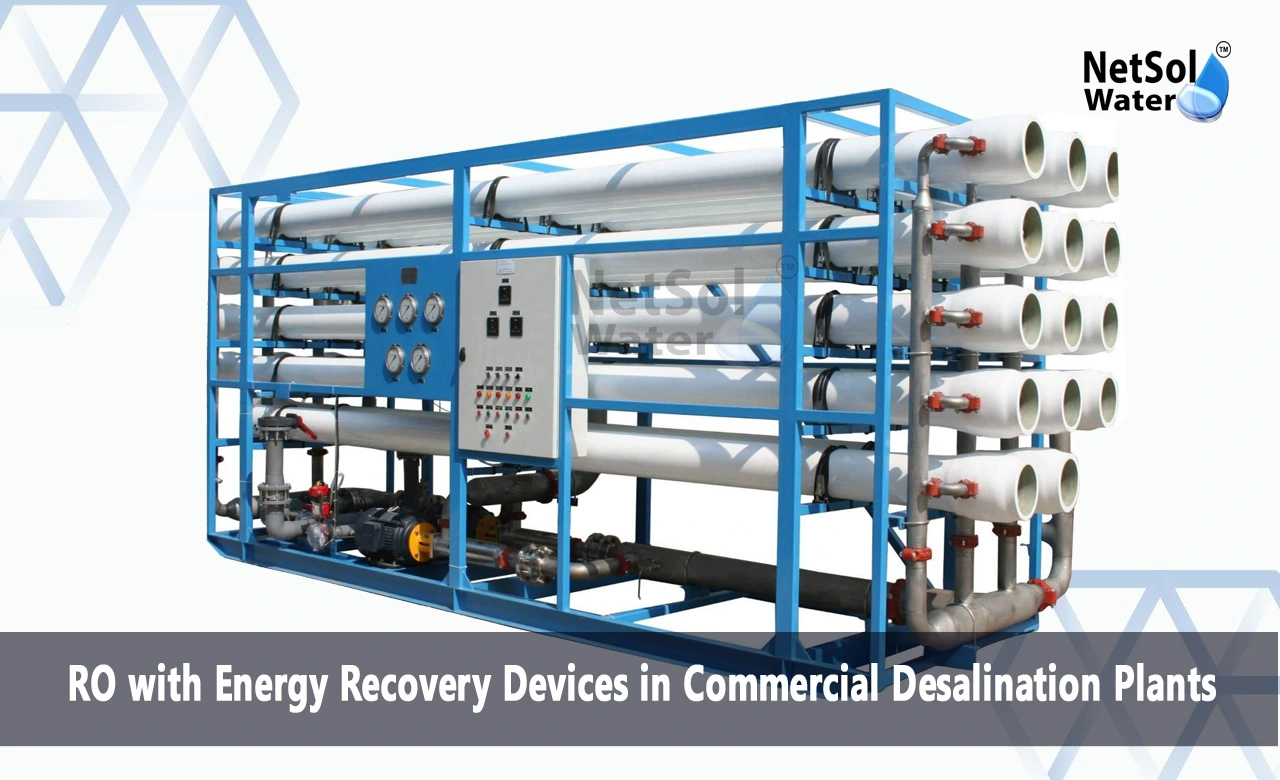RO with Energy Recovery Devices in Commercial Desalination Plants
In the world of desalination, reverse osmosis (RO) stands out as a transformative technology. This method utilizes semi-permeable membranes to eliminate dissolved salts, minerals, and other impurities from saline water, yielding fresh, drinkable water. While the concept is simple, its application in commercial desalination facilities demands advanced engineering and inventive strategies to boost efficiency and cost-effectiveness.
A notable solution lies in incorporating energy recovery devices (ERDs) into the RO system. These devices are instrumental in curbing energy consumption and operational expenses of desalination plants, thereby enhancing sustainability and economic viability.
Understanding Energy Recovery in RO Systems
In a typical RO system, high-pressure pumps are used to force the saline water through the semi-permeable membranes. This process generates a substantial amount of energy in the form of a high-pressure brine stream, which is typically discharged as waste. Without energy recovery, this wasted energy would result in significant operational costs and inefficiencies.
ERDs capture and reuse this energy from the high-pressure brine stream, transferring it back to the incoming saline water stream. By doing so, they reduce the amount of energy required from the high-pressure pumps, leading to substantial energy savings and lower operating costs.
Types of Energy Recovery Devices
Several types of ERDs are employed in commercial desalination plants, each with its own unique characteristics and advantages:
1. Turbine Energy Recovery Devices (TERDs)
TERDs use a turbine coupled to a shaft that converts the energy from the high-pressure brine stream into rotational energy. This rotational energy is then used to drive a second pump, which increases the pressure of the incoming saline water stream.
2. Isobaric Energy Recovery Devices (IERDs)
IERDs utilize a series of chambers and pistons to transfer the energy from the high-pressure brine stream directly to the incoming saline water stream. This direct energy transfer results in a highly efficient energy recovery process.
3. Pressure Exchanger Energy Recovery Devices (PERDs)
PERDs employ a rotating rotor with chambers that transfer energy from the high-pressure brine stream to the incoming saline water stream through a direct pressure exchange mechanism.
Each type of ERD has its own advantages and limitations, and the choice depends on factors such as plant size, energy requirements, and operational conditions.
Benefits of Energy Recovery in Desalination Plants
The integration of ERDs into commercial desalination plants offers several significant benefits:
1. Energy Savings
By recovering and reusing a significant portion of the energy from the high-pressure brine stream, ERDs can reduce the overall energy consumption of the desalination plant by up to 60%. This translates into substantial cost savings and a lower carbon footprint.
2. Increased Efficiency
ERDs enhance the overall efficiency of the RO system by reducing the energy input required for the high-pressure pumps. This increased efficiency can lead to improved water production rates and lower operational costs.
3. Environmental Sustainability
By reducing energy consumption, ERDs contribute to the environmental sustainability of desalination plants. Lower energy usage translates into a smaller carbon footprint and a reduced impact on the environment.
4. Longer Membrane Life
The reduced energy input required by the high-pressure pumps, thanks to ERDs, can lead to lower operating pressures and reduced stress on the RO membranes. This can potentially extend the lifespan of the membranes, further reducing operational costs.
Challenges and Considerations
While ERDs offer significant advantages, their implementation in commercial desalination plants also presents challenges that must be addressed:
1. Initial Investment
The integration of ERDs into existing desalination plants or the construction of new plants with ERDs can require a substantial initial investment. However, the long-term energy savings and operational cost reductions often justify this upfront cost.
2. Maintenance and Reliability
ERDs are complex mechanical devices that require regular maintenance and monitoring to ensure reliable operation. Proper training of personnel and adherence to maintenance schedules are crucial to maximize the benefits of these devices.
3. Compatibility with Existing Systems
When retrofitting existing desalination plants with ERDs, compatibility with the existing infrastructure and RO system components must be carefully evaluated to ensure seamless integration and optimal performance.
4. Scalability
The selection and sizing of ERDs must consider the potential future expansion of the desalination plant. Scalability and the ability to accommodate increased capacity are important factors in the choice of ERD technology.
Conclusion
As the need for clean water keeps growing worldwide, desalination plants become really important in tackling water shortages. Adding energy recovery devices to these plants' systems is a big help in using energy better and being more eco-friendly.
These devices capture and reuse energy from the salty water, which saves a lot of energy, makes the plants work better, and is kinder to the environment. Even though there are challenges like the cost of getting started, upkeep, and making sure everything works together, the benefits of energy recovery devices make them a smart choice for desalination plant operators.
As technology gets better, these devices will become even more important in desalination plants. People are working on making them more efficient, reliable, and easy to use, so desalination can be done in a way that's good for the planet and saves money in the long run.
By adding energy recovery devices to desalination plants, we're taking a big step toward using energy smarter and being kinder to the environment while making sure there's enough clean water for everyone.
Do you need an advice or assistance on selecting the best water and waste water treatment unit? We have solutions for all your problems!
Let us now your problem, our experts will make sure that it goes away.
For an assistance or related query,
Call on +91-965-060-8473 Or write us at enquiry@netsolwater.com



